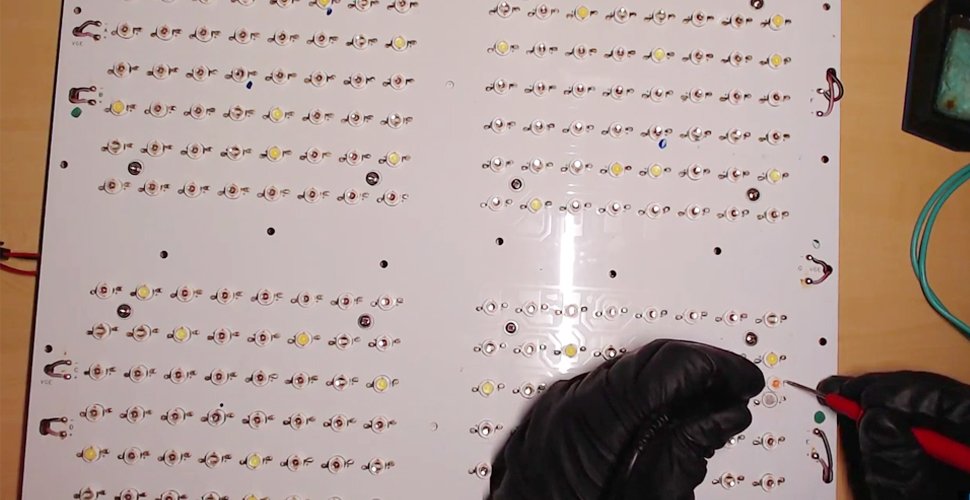Drømmer om saftige tomater, der sprænger med smag, urter, der danser i sollyset, og en personlig oase, der er overfyldt med hjemmearbejdet godhed.
At opbygge dit hydroponiske system er ikke kun til erfarne DIY Mavericks. Faktisk med lidt vejledning og den rigtige tilgang kan endda begyndere botanikere dyrke deres hydroponiske paradis.
Vi navigerer i de to mest begyndervenlige hydroponiske systemer- Den dybe vandkultur (DWC) og EBB- og flow -systemet.
Før vi begynder: Valg af dit system
Lad os udforske de to systemer, vi bygger:
Deep Water Culture (DWC): i DWC, planterødder dingler i en næringsrig opløsning, der konstant bades i ilt takket være en luftpumpe. DWC er enkel at oprette og vedligeholde, DWC er ideel til bladgrøntsager og urter.
Ebb- og flow -system: Dette system oversvømmer og dræner med jævne mellemrum voksenbedet og efterligner tidevandets naturlige stigning og fald. Dette ilteres rødderne og forhindrer opbygning af næringsstoffer, hvilket gør den velegnet til en bredere vifte af planter, inklusive frugt og grøntsager.
Opbygning af dit DWC -system
DWC-systemet er et populært og brugervenligt hydroponisk system. Planteødder er nedsænket i iltet vand, hvilket giver dem mulighed for at modtage rigelig vand, næringsstoffer og ilt. Dette system kræver en luftpumpe og en luftsten for at opretholde iltniveauerne i vandet.
Materialer:
Luftsten
Luftpumpe
Net kan
Reservoir (såsom en tote eller spand)
Næringsopløsning (hydroponisk formel)
Kniv til skæring af skumplastikplatform
Polystyrenskum til brug som en flåde
Voksende medium (Rockwool, Clay Pebbles)
Timer (valgfrit)
Trin:
1. Forbered reservoiret: Borhuller i låget til luftstenen og nettoen. Sørg for, at vandstanden ikke nedsænker plantestænglerne.
2. Injicer næringsopløsning i reservoiret: Bland koncentratet i henhold til producentens instruktioner og fyld til en dybde på 30 centimeter eller dybere.
3. Indsæt luftsten og netto gryden: nedsænk luftstenen i vandet, og fastgør nettoten i lågens huller.
4. Skær polystyrenskum for at skabe en flydende flåde, placere det ca. 3 centimeter under toppen af beholderen eller reservoiret. Skær huller i skummet med tilstrækkelig afstand.
5. Injicerer voksende medium i nettopotten: Anbring plantens rødder forsigtigt i det voksende medium, og hold stænglerne over vandlinjen.
6. Placer planten i nettoen, og indsæt derefter nettoen i hullerne i skumplastikplatformen. Nettpotten giver planteødderne mulighed for at vokse fra bunden og siderne, hvilket gør det lettere for dem at få adgang til næringsstoffer og ilt.
7. Tilslut luftpumpen og timeren (valgfrit): En timer muliggør automatisk næringsstofleveringscyklusser.
Opbygning af dit ebbe- og flow -system
EBB- og flow -systemet er mere teknisk og komplekst, men det giver også større alsidighed. Dens funktionalitet involverer periodisk vandindstrømning og udstrømning fra reservoiret baseret på plantens behov, vækstcyklus og endda temperatur.
Under tilstrømningsprocessen strømmer iltet vand gennem systemet og giver vand og næringsstoffer til planterne. Når det drænes, vender næringsopløsningen i vandet tilbage til reservoiret til genbrug, hvilket kræver, at en pumpe nedsænkes og dræner vækstbakken.
Materialer:
Reservoir container (tote, spand)
Plantningsseng (plastbeholder,
PVC -rør)
Siphon Bell og Riser
Pumpe og timer
Voksende medium (lersten, perlite)
Netto gryder og låg
Trin:
1. Opret planteseng: Borhuller i bunden af beholderen til dræning. Hvis du bruger PVC -rør, skal du forbinde dem med albuer og tees til at danne et gitter.
2. Installer sifonklokken og stigerøret: Placer sifonklokken i bunden af reservoiret, og stigerøret strækker sig over vandstanden i plantesengen.
3. Tilslut pumpen og timeren: Pumpen skubber næringsopløsningen op i stigerøret og nedsænker planteseng. Timeren styrer cyklussen for oversvømmelse og dræning.
4. Fyld planteseng med voksende medium- og nettotpotter: Efter trinnene til opsætning af et DWC -system skal du placere nettotpotterne oven på det voksende medium.
Vedligeholdelse af dit hydroponiske system
Overvåg næringsniveauer og pH: Test regelmæssigt din løsning og juster den for at opretholde optimal plantevækst.
Hold systemet rent: Udskift næringsopløsningen regelmæssigt og tør udstyret ned for at forhindre algevækst.
Beskær dine planter: Regelmæssig beskæring tilskynder til sund vækst og forhindrer overfyldning.
Køb af vs. bygning
For at være ærlig er ikke alle en DIY -entusiast. Mens det kan være en givende oplevelse at opbygge dit hydroponiske system, hvilket bringer en følelse af gennemførelse og personalisering, kræver det også tid, tekniske færdigheder og nok tålmodighed til at fejlfinde problemer.
For mange entusiaster fra grønnere levevis kan presset af elværktøjer og PVC-rør hurtigt føre til at visne drømme om hjemmevoksne friske produkter. Hvorfor ikke købe et eksisterende hydroponisk system i stedet for at gennemgå materialeopkøb og konstruktion?
Alt hvad du har brug for kommer pænt pakket, mærket og med klare instruktioner, hvilket gør det forståeligt, selv for nogen, der plejer planter for første gang. Ingen grund til at dechiffrere kryptiske skemaer eller gætte enhver forbindelse.
Sig farvel til frustrationerne fra DIY -projekter og utætte forbindelser. I stedet kan du nyde sprøde salatgrønt eller saftige cherrytomater på kort tid.
Auxgrows hydroponiske systemer er typisk designet med modularitet i tankerne. Du kan tilføje et andet plantetårn, et andet dyrkningsskab eller udskifte komponenter, når din grønne tommelfinger vokser.
Fra desktop urte haven til lodrette vegetabilske landskaber leverer vi løsninger til forskellige rum og forskellige behov. Hvis du er interesseret i vores hydroponiske systemer, bedes du kontakte os for de mest detaljerede oplysninger.



Bonus tip
Start små med en eller to planter for at få erfaring, før du udvider dit hydroponiske system.
Undersøg de specifikke behov hos de planter, du vælger at dyrke.
Deltag i online Hydroponics -samfund for støtte og rådgivning.
Jayes
Som Digital Marketing Manager hos AUXGROW kombinerer Jayes en passion for hydroponiske systemer og ekspertise inden for LED vækstlys. Med praktisk erfaring og en dyb forståelse guider Jayes dig gennem verden af bæredygtig dyrkning.






